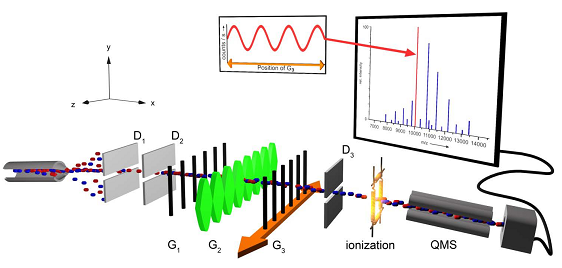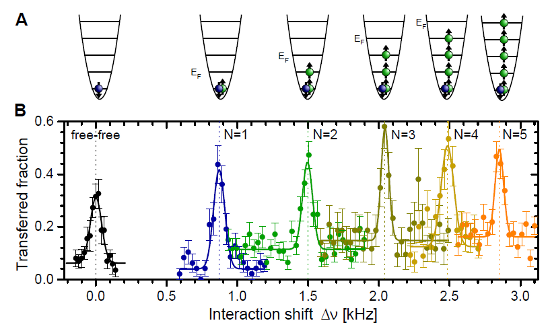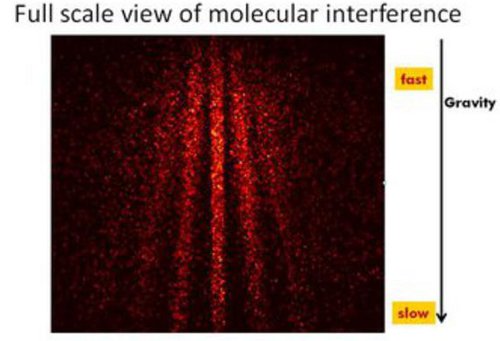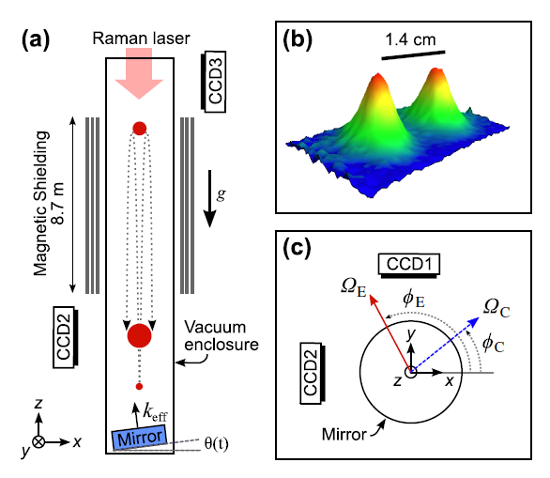Topping the looooong list of things I would give a full ResearchBlogging write-up if I had time is this new paper on a ultra-cold atom realization of “Dirac Monopoles”. This is really cool stuff, but there are a lot of intricacies that I don’t fully understand, so writing it up isn’t a simple matter. The… Continue reading Small College, Exotic Particles
Category: Quantum Optics
Interference with 10,000-Particle “Particles”: “Matter-wave interference with particles selected from a molecular library with masses exceeding 10000 amu”
I’m teaching Quantum Optics this term, and one of my students picked “Atom Optics” off the list of suggested paper topics. When he asked for pointers, I said “You should check out the diffraction stuff Markus Arndt’s group does.” And just like that, a paper from the Arndt group turns up from the Arxiv Blog…… Continue reading Interference with 10,000-Particle “Particles”: “Matter-wave interference with particles selected from a molecular library with masses exceeding 10000 amu”
One, Two, Many, Lots: Investigating the Start of Many-Body Physics
Two papers with a similar theme crossed my social media feeds in the last couple of days. You might think this is just a weird coincidence, but I’m choosing to take it as a sign to write about them for the blog. So, what are these papers, and what’s the theme? One is the final… Continue reading One, Two, Many, Lots: Investigating the Start of Many-Body Physics
Quantum Erasure
When I posted congratulating the winner of this year’s Nobel betting pool, I received a gentle reminder in email that I’m a Bad Person and still haven’t done one of the posts I owe to the 2011 winners. Evan reminded me that he asked for something about the delayed-choice quantum eraser, so let’s talk about… Continue reading Quantum Erasure
When Is a Composite Object a Particle?
Through some kind of weird synchronicity, the title question came up twice yesterday, once in a comment to my TED@NYC talk post, and the second time on Twitter, in a conversation with a person whose account is protected, thus rendering it un-link-able. Trust me. The question is one of those things that you don’t necessarily… Continue reading When Is a Composite Object a Particle?
Laser-Cooled Atoms: Cesium
Element: Cesium (Cs) Atomic Number: 55 Mass: One stable isotope, mass 133 amu. Laser cooling wavelength: 854nm, but see below. Doppler cooling limit: 125 μK. Chemical classification: Yet another alkali metal, column I of the periodic table. This one isn’t greyish, though! It’s kind of gold color. Still explodes violently in water, though. Other properties… Continue reading Laser-Cooled Atoms: Cesium
Laser-Cooled Atoms: Strontium
Element: Strontium (Sr) Atomic Number: 38 Mass: Four stable isotopes, ranging from 84 to 88 amu Laser cooling wavelength: Two different transitions are used in the laser cooling of strontium: a blue line at 461 nm that’s an ordinary sort of transition, and an exceptionally narrow “intercombination” line at 689 nm. Doppler cooling limit: 770… Continue reading Laser-Cooled Atoms: Strontium
Spooky Action at What Distance?
When I wrote up the giant interferometer experiment at Stanford, I noted that they’ve managed to create a situation where the wavefunction of the atoms passing through their interferometer contains two peaks separated by almost a centimeter and a half. This isn’t two clouds of atoms each definitely in a particular position, mind, this is… Continue reading Spooky Action at What Distance?
Point Sources and Towers: “Multiaxis Inertial Sensing with Long-Time Point Source Atom Interferometry”
A little over a year ago, I visited Mark Kasevich’s labs at Stanford, and wrote up a paper proposing to use a 10-m atom interferometer to test general relativity. Now, that sounds crazy, but I saw the actual tower when I visited, so it wasn’t complete nonsense. And this week, they have a new paper… Continue reading Point Sources and Towers: “Multiaxis Inertial Sensing with Long-Time Point Source Atom Interferometry”
Tools of the Cold-Atom Trade: Light Shifts and Optical Dipole Traps
The last post in this series on the core technologies of cold-atom physics dealt with optical molasses, where you use the scattering of light to exert forces on atoms to make them very, very cold. It turns out, they end up even colder than the simple theory would lead you to expect, which is very… Continue reading Tools of the Cold-Atom Trade: Light Shifts and Optical Dipole Traps







